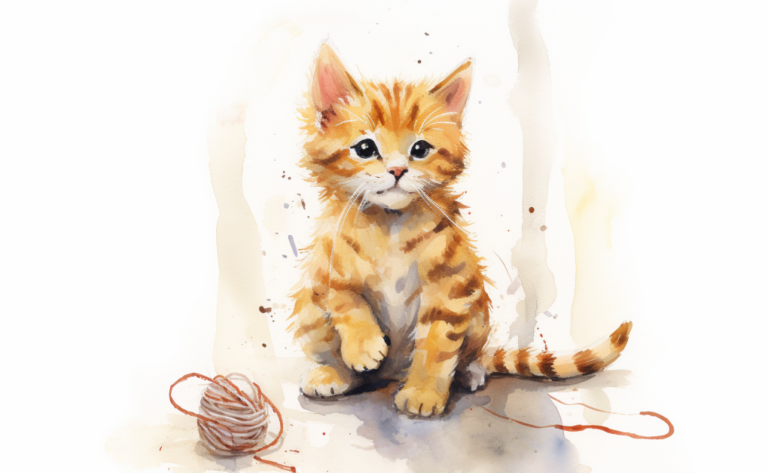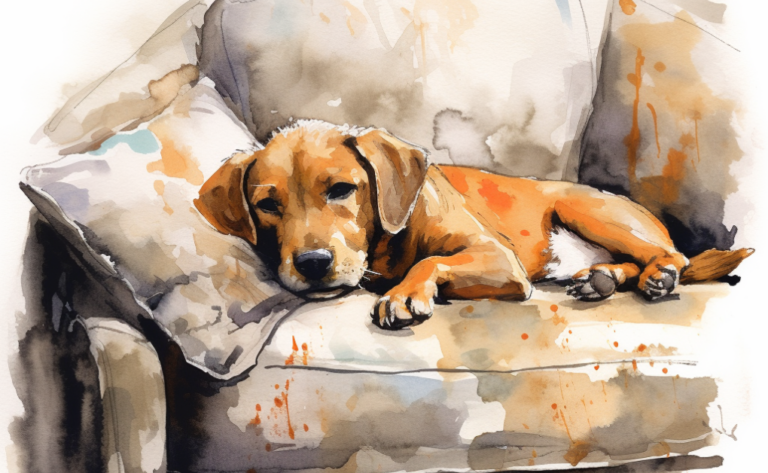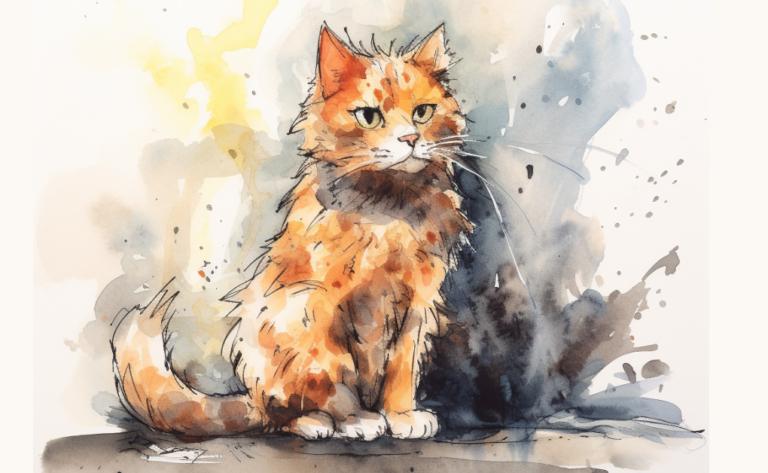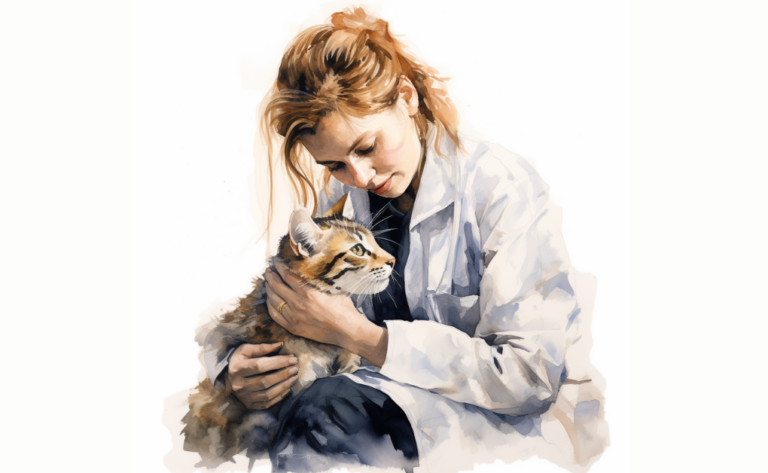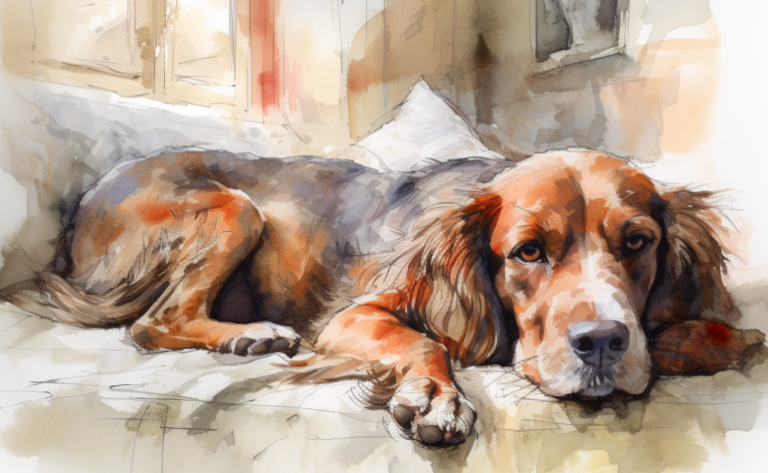What is Chronic Kidney Disease in Cats?
What is it?
How is it Treated?
Breed Predispositions
Persian Siamese Abyssinian Burmese Maine Coon Russian Blue Himalayan Devon Rex
Introduction
When Sarah noticed her Siamese cat, Whiskers, displaying unusual symptoms like increased thirst, weight loss, and poor coat condition, she became increasingly worried about her feline friend’s health. Seeking answers, she brought Whiskers to the veterinarian for a thorough examination. After running several tests, the veterinarian diagnosed Whiskers with chronic kidney disease, a common and progressive illness in cats.
Chronic Kidney Disease (CKD), often called chronic renal failure, is a long-standing condition in felines that results in the progressive deterioration of kidney function. The kidneys are critical organs that execute several crucial tasks within the body, such as filtering waste products from the bloodstream, preserving electrolyte balance, regulating the body’s fluid equilibrium, and generating certain hormones.
In felines afflicted with CKD, the cat’s kidney gradually loses its ability to carry out these responsibilities effectively. As the disease progresses, waste products build up in the bloodstream due to the kidneys’ reduced filtering ability. This situation, known as uremia, can have a wide array of impacts on a cat’s overall health and wellness.
It’s crucial to recognize that CKD, or kidney insufficiency, is a degenerative disease that worsens kidney function over time. While it poses a serious health concern, appropriate management can enable many cats with CKD to maintain a good quality of life for several months or even years. It’s also pertinent to note that while CKD is not curable, the progression can be curtailed with proper management and treatment. This is in contrast to the efficient operation of healthy kidneys, which are also responsible for producing red blood cells.
Causes of Chronic Kidney Disease in Cats
Chronic Kidney Disease (CKD), also known as chronic renal disease, often results from an amalgamation of factors in felines. These factors can be significantly diverse, and it might be challenging to identify the exact root cause in every instance. Nevertheless, certainly known contributors to CKD include:
Aging
CKD frequently affects senior cats. As a cat age, a natural reduction in kidney function can transpire. Initially, these alterations may not be conspicuous, but they can culminate in CKD over time. Veterinarians have estimated that around 20%-50% of older cats may have some form of chronic kidney disease.
Underlying Health Conditions
Certain health issues can also be contributing factors to the onset of CKD. These include high blood pressure or hypertension, urinary tract infections, and systemic illnesses such as diabetes and hyperthyroidism. These conditions impose additional strain on the kidneys and can foster CKD development over time.
Genetic Factors
Certain feline breeds may have an increased risk of developing CKD due to genetic predispositions. For example, Persian and Oriental cats seem more prone to CKD. This doesn’t imply that all cats of these breeds will be afflicted with CKD, but their genetic makeup may heighten the likelihood.
Exposure to Toxins
Contact with specific toxins can damage the kidneys, potentially leading to CKD. This could encompass certain medications, chemicals, and even specific types of food.
Dental Health
Inadequate dental health can play a role in promoting kidney disease. Bacteria from oral health issues can infiltrate the bloodstream and negatively impact various organs, including the kidneys.
In numerous instances, a blend of these factors likely contributes to the onset of CKD in a given cat. This explains why it’s vital to maintain regular veterinary check-ups, as early detection and management of these contributors can decelerate the progression of the disease. This is particularly important since acute renal disease can also progress to chronic renal disease, seen in cats with conditions like polycystic kidney disease and low potassium levels. This makes CKD a common cause of CKD observed in felines.
Symptoms of Feline Kidney Failure
Felines with chronic kidney disease (CKD), a condition that could potentially affect a cat of any age, often exhibit early signs of the disease process. An affected cat may show indications such as:
Elevated Thirst and Urination
One of the primary symptoms of failing kidneys is increased thirst and corresponding urination frequency as the cat’s body attempts to flush out excess waste products that the kidneys can no longer filter effectively.
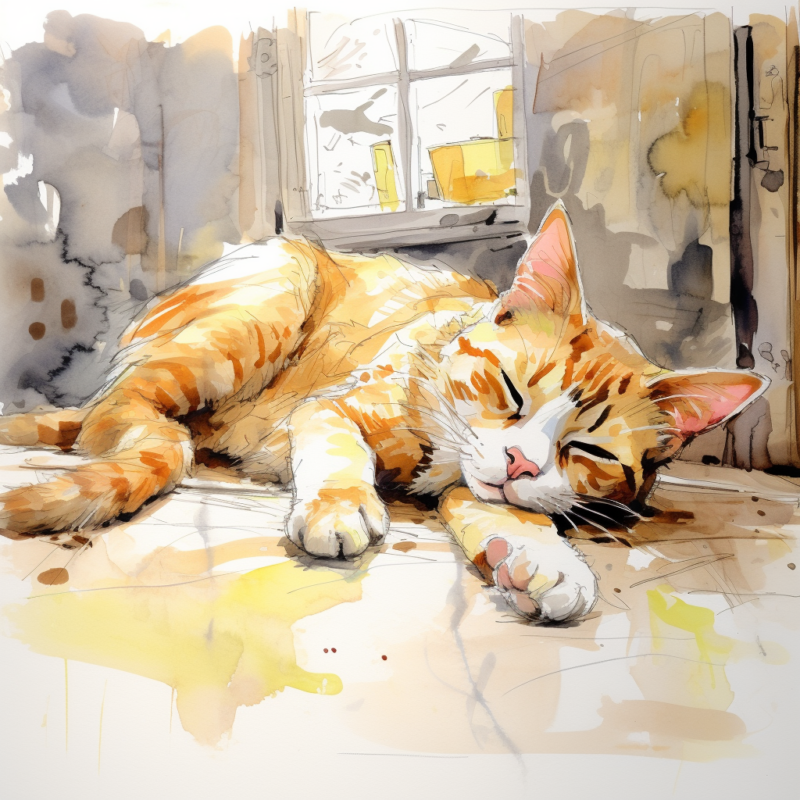
Weight Reduction and Decreased Appetite
Affected cats may experience weight loss due to a decreased appetite, a common sign of CKD. This could result from nausea or a general sense of malaise linked to the disease.
Gastrointestinal Upsets
Vomiting and diarrhea can be present in cats suffering from CKD, possibly due to the buildup of toxins in the body or a concurrent kidney infection.
Diminished Activity and Lethargy
Cats with CKD often decrease their normal activity levels or lethargy, which may stem from a general feeling of unwellness or weakness, particularly in the hind legs.
Deterioration in Coat Condition
A cat owner may notice a decline in the pet’s coat condition. It might appear dull or unkept, which can be a physical manifestation of the internal health issues linked with CKD.
Unpleasant Breath and Oral Health Issues
Cats with CKD may develop bad breath with a chemical or ammonia-like odor due to the build-up of waste products that the kidneys are unable to filter. Additionally, mouth ulcers may be present, further indicating a decline in the cat’s overall health.
Behavioral Changes
Changes in behavior, such as increased irritability, might be noticeable as the normal kidney function becomes compromised and the disease progresses.
Constipation and Blindness
Other symptoms can include constipation and even blindness due to high blood pressure associated with CKD.
Identifying these signs of CKD early can help initiate necessary interventions and potentially slow the disease’s progression. It’s important to remember that this disease is usually progressive, and any delay in treatment could lead to kidney failure.
Diagnosis of Chronic Kidney Disease in Cats
When a cat exhibits any symptoms associated with chronic kidney disease (CKD), it’s imperative to consult a veterinarian for a thorough examination. A veterinarian versed in feline veterinary medicine will usually conduct blood and urine tests, among other diagnostic procedures, to pinpoint any underlying causes for the problem.
Blood testing
Blood tests are pivotal in the early diagnosis of CKD in felines. These tests quantify the levels of specific waste products, such as creatinine and blood urea nitrogen (BUN), typically expelled by healthy kidneys. Cats with kidney failure often display elevated levels of these substances, indicating compromised kidney function. Blood tests can also disclose anemia and fluctuations in electrolyte levels, common occurrences in cats suffering from CKD.
Urinalysis
The analysis of a cat’s urine, or urinalysis, helps gauge the kidney’s capability to concentrate urine—a function often impaired in CKD. This examination can also spot the presence of protein, glucose, or red and white blood cells in the urine, signifying potential kidney damage. The urine-specific gravity is an important part of this evaluation.
Imaging
Imaging tests such as X-rays or ultrasounds are sometimes conducted to visually represent the kidneys and urinary tract. These tests can help identify alterations in the size and shape of the kidneys, the presence of a kidney stone, or tumors that could be instigating or contributing to CKD.
Biopsy
A kidney biopsy may be necessary in specific situations, particularly when the precise cause of the CKD remains elusive. This procedure entails studying a small tissue sample from the kidney under a microscope. Nonetheless, a biopsy is usually reserved for certain cases due to its invasive nature and associated risks.
Blood Pressure Measurement
Hypertension, or high blood pressure, is frequently linked to CKD in cats. It can exacerbate kidney and other organ damage but also result from CKD. Hence, monitoring a cat’s blood pressure is crucial in diagnosing and managing CKD.
The disease is usually diagnosed following these procedures. Early detection is crucial as CKD is a progressive condition, and cats will often require immediate treatment to manage the symptoms and slow the progression of the disease.
Treatment for Chronic Kidney Disease in Cats
The fundamental objectives of treating chronic kidney disease (CKD) in felines revolve around addressing the underlying cause when feasible, managing symptoms, slowing down the progression of the disease, and enhancing the cat’s quality of life. The treatment options differ based on the CKD stage and the cat’s health.
Dietary Management
Dietary modification serves as a pivotal aspect of CKD management in felines. Implementing a diet that is low in phosphorus and protein but high in moisture can help alleviate the kidneys’ workload, decelerate the progression of the disease, and help manage symptoms such as vomiting and weight loss. The diet may also be augmented with Omega-3 fatty acids, which have proven beneficial for kidney health.
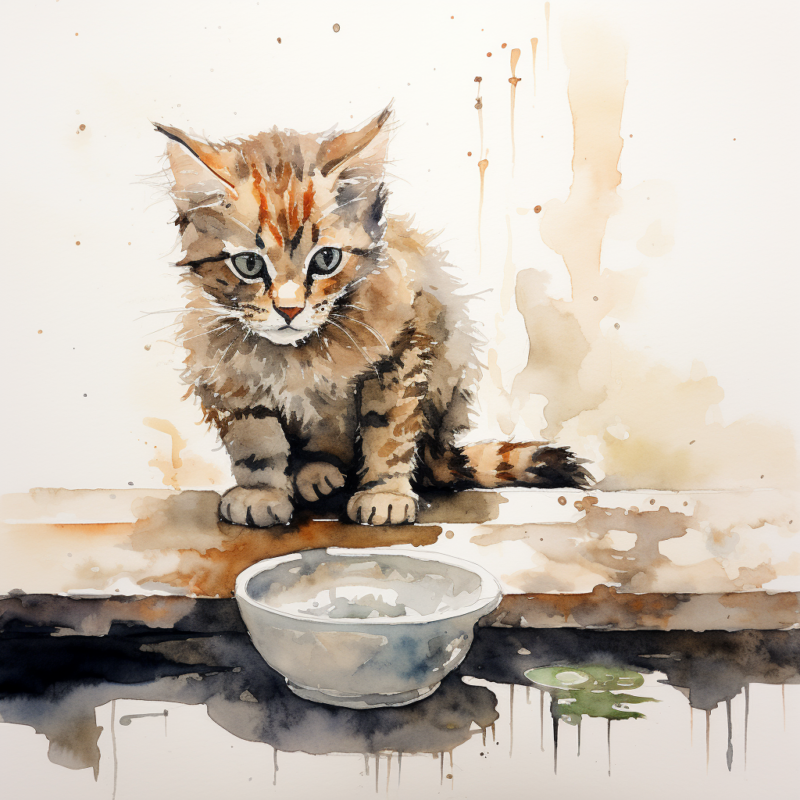
Fluid Therapy
Cats suffering from CKD frequently experience dehydration due to the impaired capacity of the kidneys to concentrate urine. The administration of additional fluids through subcutaneous injections (under the skin) or via intravenous fluids can help maintain hydration levels and expel toxins from the cat’s body, hence playing a crucial role in fluid therapy.
Medications
Various medications might be recommended to manage symptoms and complications associated with CKD. These could encompass medications to manage hypertension, alleviate vomiting and nausea, treat anemia, and balance electrolyte levels. To reduce phosphorus levels in the blood, phosphate binders might be administered.
Kidney Transplant
A kidney transplant might be considered for total or end-stage kidney failure. This intricate and expensive procedure, including possibly rejecting the transplanted kidney, carries risks. However, it has the potential to cure the disease and substantially improve the quality of life for some felines, despite CKD not being a curable or reversible disease in most cases.
Regular Monitoring and Supportive Care
Routine examinations and monitoring play an essential role in managing CKD in cats. It allows for timely modifications to the treatment plan, early detection of complications, and assessment of the cat’s overall health and quality of life. Supportive care, which includes pain management and ensuring the cat maintains a healthy weight, is a critical part of the treatment strategy. This comprehensive approach can help manage CKD, even in the case of an acute kidney injury.
Prevention and Management of Kidney Diseases in Cats
While the onset of chronic kidney disease (CKD) isn’t always preventable, there are some steps cat owners can take to mitigate the risk and catch early signs of CKD if the disease develops.
Maintain a Nutritious Diet
Ensuring proper nutrition is integral to preserving your cat’s overall health. Feeding your cat a balanced diet can help optimize kidney function. Some pet food companies even offer diets specifically designed to support kidney health, which could benefit cats at risk of kidney dysfunction.
Routine Veterinary Check-ups
Routine veterinary check-ups are crucial for the early detection of potential health issues, including kidney disease. Even if they appear healthy, senior cats should have their blood, urine, or kidney values checked at least once a year. Early detection could initiate support and treatment that slow the progression of the disease, potentially prolonging the life by slowing the disease’s progression.
Hydration Maintenance
Maintaining adequate hydration in your cat is crucial for effective kidney function. By providing fresh water daily and considering wet food diets, you can help maintain suitable hydration levels.
Managing Existing Health Conditions
Effective management of existing health conditions, such as diabetes or high blood pressure, can prevent complications like kidney disease. Always adhere to your vet’s advice for managing these conditions.
Avoidance of Toxins
Various substances, including specific medications, plants, and antifreeze, can be damaging or toxic to your cat’s kidneys. Keep potential toxins out of your cat’s reach and administer medications strictly as directed by your vet.
Sustain a Healthy Weight
Obesity can instigate numerous health problems in cats, including kidney disease. Helping your cat maintain a healthy weight through a balanced diet and exercise can reduce their risk.
Lastly, it’s important to note that while these preventive measures can be beneficial, they don’t guarantee your cat won’t develop CKD, especially as they age or if they have a genetic predisposition. However, they can significantly contribute to your cat’s overall health and longevity. The severity of the disease varies, but early intervention can make a substantial difference in the common disease of CKD.
Frequently Asked Questions
Disclaimer: The information provided on this veterinary website is intended for general educational purposes only and should not be considered as a substitute for professional veterinary advice, diagnosis, or treatment. Always consult a licensed veterinarian for any concerns or questions regarding the health and well-being of your pet. This website does not claim to cover every possible situation or provide exhaustive knowledge on the subjects presented. The owners and contributors of this website are not responsible for any harm or loss that may result from the use or misuse of the information provided herein.



